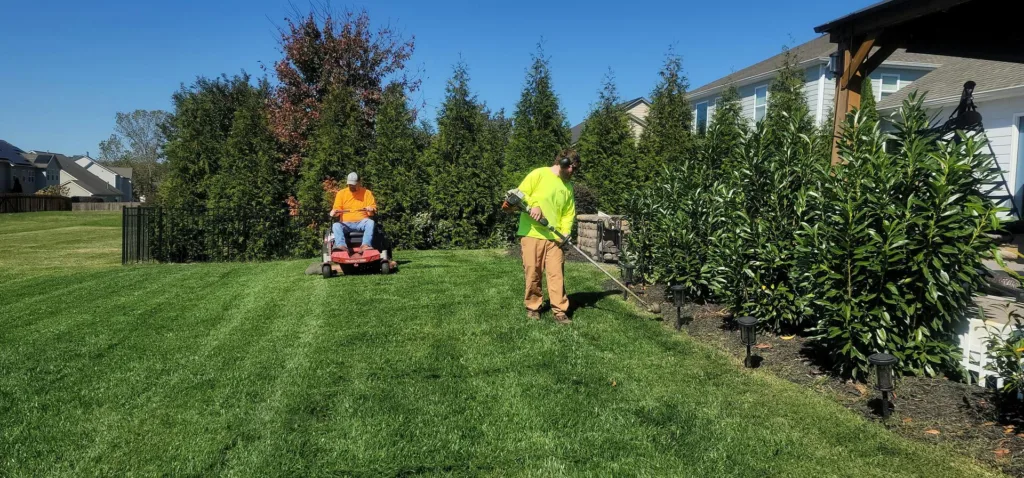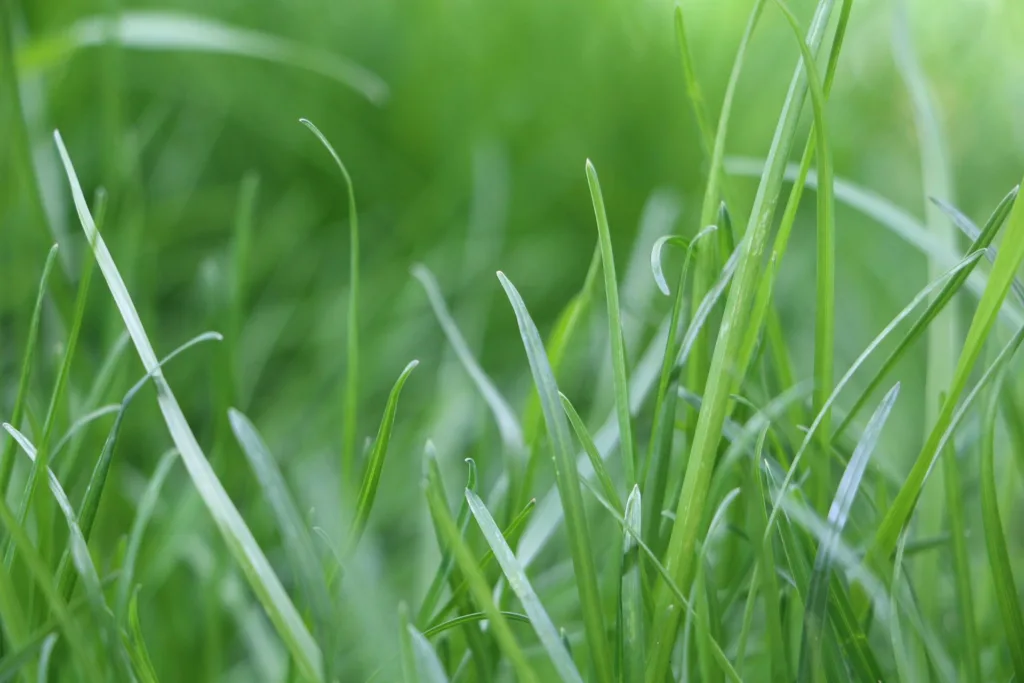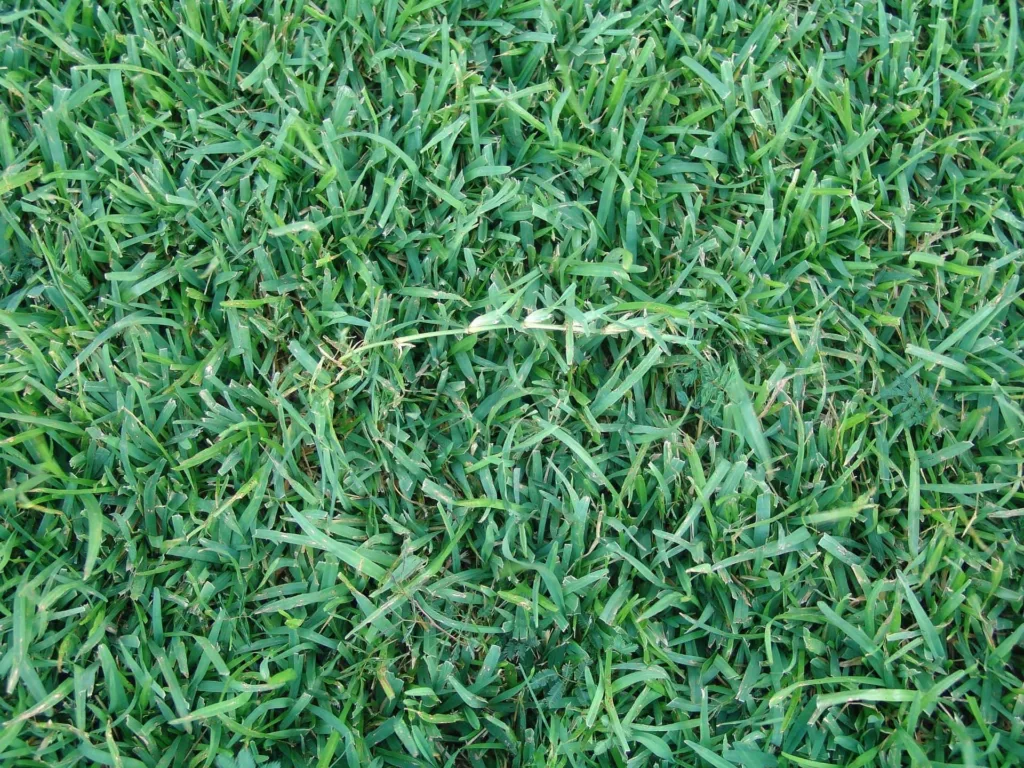Lush, resilient, and distinctly attractive, St. Augustine grass is a favorite among homeowners in warmer climates, dreaming of a vibrant, green carpet surrounding their homes. Whether you’re new to lawn care or a seasoned green-thumb, understanding the ins and outs of nurturing this warm-season grass can transform your lawn into the envy of the neighborhood.
In this guide, I’ll walk you through everything you need to know about St. Augustine grass, from planting to maintenance, and tackle some common issues that might arise along the way.
Introduction
Meet St. Augustine grass: a robust, fast-growing favorite for those residing in the warmer zones of the planet. Originally hailing from the coastal regions of the Gulf of Mexico and Mediterranean shores, this grass type is named after St. Augustine, Florida, where it’s been a staple since the 1800s. Characterized by its broad, flat blades and rich green hue, St. Augustine grass thrives under the warm sun, making it an ideal choice for many homeowners looking to blanket their yards in lush, verdant turf.
Why do so many swear by St. Augustine? Its popularity boils down to a few key traits: it’s notably shade-tolerant compared to other warm-season varieties, it can handle salty soils—a big plus for coastal dwellers—and it establishes quickly, providing rapid ground cover.
This grass loves the heat and isn’t shy about spreading, making it a durable option for creating a thick, comfortable lawn that’s as pleasing to the feet as it is to the eyes. Whether you’re starting a new lawn or improving an existing one, St. Augustine could be the robust, low-maintenance solution you’ve been searching for.
Characteristics of St. Augustine Grass
St. Augustine grass, often lauded for its lush appearance and resilience, stands out among turf varieties for several notable features. First up, let’s talk texture and color. This type of grass boasts wide, flat blades that are fairly coarse to the touch—an attribute that gives the lawn its robust and thick appearance. When well-maintained, the blades flaunt a deep green hue that can elevate any yard’s aesthetic.
Now, on growth patterns—St. Augustine grass grows aggressively, thanks in part to its sprawling stolons. With these horizontal extensions, the grass rapidly covers broad areas, making it an efficient choice for quick lawn establishment. This fast-paced spread, however, means it might encroach on garden beds or neighboring territories if not regularly edged.
Another standout trait is its shade tolerance. According to sources like Wikipedia, St. Augustine grass is more tolerant of shade compared to many other warm-season grasses. This makes it an ideal candidate for yards peppered with trees or buildings casting significant shadows. However, while it’s more shade-tolerant, ample sunlight can certainly enhance its thickness and color intensity.
These qualities collectively make St. Augustine grass a favored choice for homeowners in warmer, sunlit environments who are keen on achieving a vibrant and vigorous lawn. Understanding these characteristics will help in tailoring care and maintenance routines that bolster its natural strengths and mitigate any limitations.
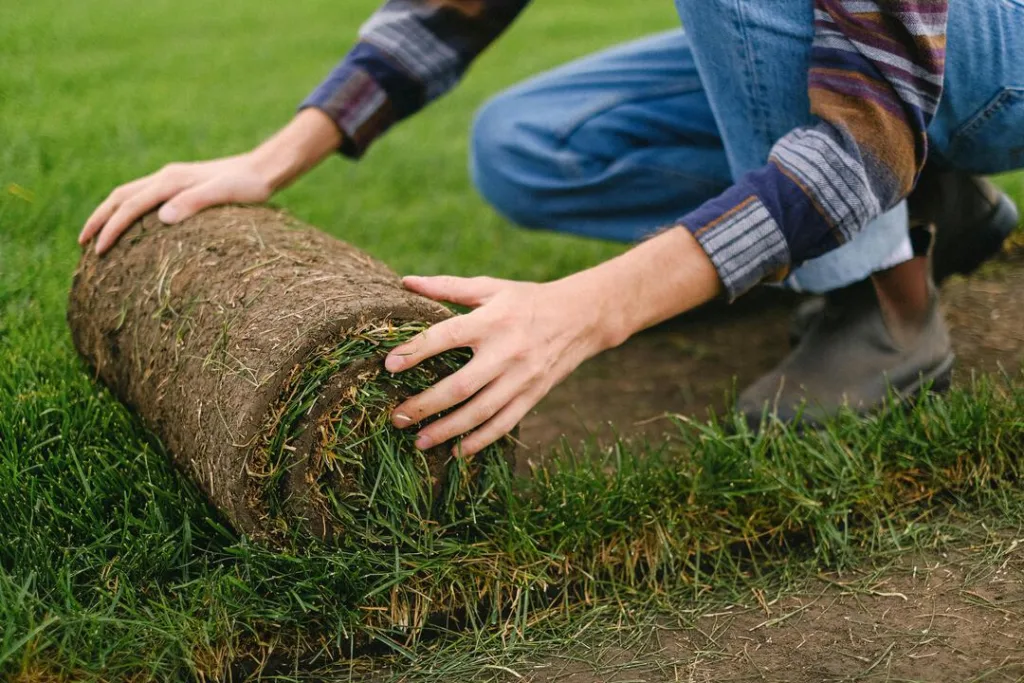
Planting St. Augustine Grass
So, you’re ready to plant St. Augustine grass? Here’s how to hit the ground running – literally! The best time of year to get your St. Augustine sod or plugs into the ground is late spring or early summer. This timing leverages the growing season’s kick-off, maximizing growth due to warmer soil temperatures and more consistent sunny days.
Steps for Laying Sod
Soil Preparation: Start by clearing the area of weeds, rocks, and debris. Break up the soil using a rototiller which helps aerate, followed by leveling with a rake. You want a smooth, even canvas for your sod.
Measure Your Area: Knowing the square footage is crucial for ordering the right amount of sod. Don’t eyeball it—measure it.
Laying the Sod: Begin by laying rows of sod along a straight edge, such as a driveway or sidewalk. Butt the edges snugly without overlapping, and stagger the joints in a brick-layer pattern to avoid lines. Use a sod knife to trim around obstacles.
Initial Watering: Once all the sod is down, give it a good soak. Be generous, as you’ll want moisture to penetrate the soil beneath. For the first few weeks, keep the sod moist but not soggy.
Steps for Planting Plugs
Spacing and Digging: Plugs should be spaced about 12 inches apart in a grid pattern. Dig holes slightly deeper than the height of the plug root ball.
Planting: Insert the plugs into the holes, ensuring they are level with the soil surface. Fill any gaps around the plug with soil to secure them.
Watering Plugs: Like with sod, you’ll need to water the plugs well after planting. Keep the soil consistently moist to encourage rooting.
Tips for Success
- Choose Quality: Whether sod or plugs, pick high-quality, disease-free St. Augustine grass. Your local garden centers or sod farms are your best bets.
- Water Wisely: After the initial heavy watering, adjust depending on the weather. Scale back as the grass establishes to promote stronger root growth.
- Rolling the Sod: After laying sod, consider renting a lawn roller to help ensure the roots make good soil contact. This can help prevent air pockets that could dry out roots.
By following these steps and maintaining patience, your St. Augustine lawn will soon lay down solid roots, providing the perfect setting for backyard barbecues and barefoot walks through the grass. Happy planting!
Care Tips for Maintaining a Healthy St. Augustine Lawn
Keeping your St. Augustine lawn thriving isn’t as tough as it might seem. In fact, with a few straightforward practices, you can ensure that it remains lush and vigorous. Here are some essentials:
Water Wisely: St. Augustine grass craves moisture, but overdoing it can result in waterlogging and disease. Aim for deep, infrequent watering that encourages strong root growth—about 1 to 1.5 inches per week, including rainfall. Water early in the morning to reduce evaporation and fungal growth.
Sunlight Needs: Blessed with a good tolerance for shade, St. Augustine still performs best with at least 4-6 hours of direct sunlight daily. If your lawn has areas that receive less light, keep an eye on them as they may develop thin and weak patches over time.
Soil Health: A healthy lawn starts with healthy soil. St. Augustine grass thrives in well-draining, fertile soil. Perform a soil test periodically (every 2-3 years) to gauge the condition of your soil and amend it based on the test recommendations. Ensuring the right pH and nutrient balance can significantly affect your lawn’s health.
Aerate and Dethatch: Aerating your lawn helps improve oxygen, water, and nutrient flow to the grass roots. St. Augustine lawns typically benefit from annual aeration. Dethatching, on the other hand, might be needed if you notice a thick layer of thatch—more than half an inch. This helps prevent issues related to poor water absorption and pest habitation.
For more specific care details and to explore types of grass that might complement your St. Augustine lawn, head over to our lawn care section for tailored advice.
By sticking to these care basics, your St. Augustine lawn is more likely to stay healthy and vibrant, demanding less intervention and leaving more time for you to enjoy its beauty. Get these aspects right, and you’re a long way toward having the plush, green lawn of your dreams.
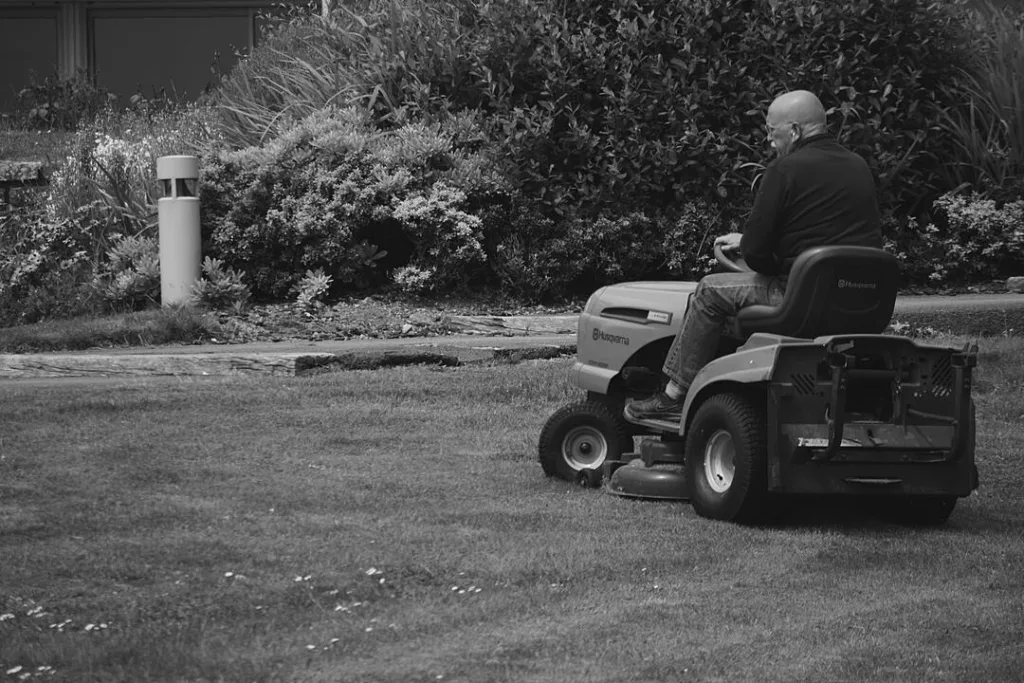
Optimal Mowing Practices for St. Augustine Grass
Ensuring your St. Augustine lawn is well-maintained significantly impacts its appearance and health. Here, we break down some essential guidelines for keeping your grass looking lush and vibrant.
Ideal Mowing Height
Optimal cutting height is crucial for maintaining a healthy lawn:
- Target Height: For St. Augustine grass, aim to keep the lawn between 2.5 to 4 inches tall.
- Benefits: This height promotes a strong root system and ensures adequate leaf surface for photosynthesis.
- Additional Tips: Although it may appear shaggier than other grass types, maintaining this height helps shade out weeds and improves stress tolerance.
Mowing Frequency
How often you mow depends on various factors:
- Growth Factors: Rate of growth, which is impacted by seasonal changes and lawn care practices.
- Regular Schedule: During the growing season, mowing might be needed once every 5 to 7 days.
- One-Third Rule: Always adhere to this rule by never cutting more than one-third of the blade’s height to avoid causing stress to the grass.
Choosing the Right Mower
Selecting an appropriate mower can enhance lawn care efficiency:
- Recommended Mower Type: A rotary mower with sharp blades is typically effective.
- Blade Maintenance: Ensure blades are sharp as dull blades can tear grass, leading to potential plant health issues.
- Mower Condition: Regular maintenance of your mower ensures better performance, especially when dealing with slightly overgrown lawns.
By implementing these mowing practices, you will not only maintain the health and beauty of your St. Augustine grass but also enhance its resilience and aesthetic appeal. Effective mowing involves consistent care and adapting to the specific needs and growing conditions of your lawn.
Fertilization Schedule
Fertilizing St. Augustine grass is not just about chucking some nutrients at it and calling it a day. It’s about timing and choosing the right stuff that’ll make your lawn thrive and not just survive. Let’s dive into when and how to fertilize your St. Augustine turf to keep it looking plush.
When to Fertilize
Kick things off in spring as the grass begins to wake up from its winter snooze and is starting to grow actively. A good rule of thumb is when you’ve mowed twice since growth picked up, it’s time to fertilize. This usually falls around early March through the end of April for most areas where St. Augustine is common. After the initial spring feeding, plan to fertilize every 6 to 8 weeks during the active growing season, which lasts until late October.
Choosing the Right Fertilizer
Pick a fertilizer that’s a good match for a warm-season turf like St. Augustine. Look for products that are high in nitrogen because St. Augustine grass is a nitrogen-hungry beast. But here’s the kicker, don’t just grab any high-nitrogen blend. Look for one with a slow-release formula. This type lets out nutrients at a steadier rate, which is better for consistent growth and helps prevent a feast-or-famine situation for your grass.
A typical N-P-K (nitrogen, phosphorus, potassium) ratio suitable for St. Augustine would be something like 15-5-10 or 20-5-10. If you’re not sure what’s best due to your soil type, a quick soil test can save you a lot of guesswork and trouble.
Seasonal Strategies
As summer rolls in, your grass will be using up a lot of energy, especially in hotter climates. A mid-summer fertilization can help keep it resilient against the heat and foot traffic. Come fall, tone down the nitrogen a bit and switch gears by opting for a product richer in potassium. This change helps the grass strengthen its roots and prep for cooler months. Avoid heavy fertilization late in the season to prevent new growth that won’t survive the winter.
Remember, the exact timing and formulation will vary based on your local climate and soil conditions. Always follow local guidelines and recommendations to avoid over-fertilizing, which can lead to runoff problems and other environmental headaches. Now, with the right fertilizer game plan, your St. Augustine lawn should have what it takes to stay lush and green, outshining the rest.
The Comparison: St. Augustine Grass vs Bermuda Grass
Deciding between St. Augustine and Bermuda grass for your lawn? Both are top contenders in warmer climates but suit different needs and preferences. Let’s break down the pros and cons of each, so you can pick the best option for your green space.
St. Augustine Grass
Pros:
- Shade tolerance: St. Augustine grass excels in shady areas where other grasses might struggle.
- Texture and appearance: It boasts a broad, lush, and vibrant green blade that can make any lawn look robust.
- Maintenance: Generally low maintenance in the right climate, St. Augustine is forgiving to lawn care beginners.
Cons:
- Water requirements: It needs a lot of water, so it might not be the best choice in regions with water restrictions.
- Cold sensitivity: This grass doesn’t fare well in cold weather, limiting its use to primarily subtropical and tropical regions.
- Pest susceptibility: Be ready to deal with pests like chinch bugs, which are particularly fond of St. Augustine.
Bermuda Grass
Pros:
- Durability: Bermuda grass is incredibly tough and can withstand heavy foot traffic, making it ideal for sports fields and active yards.
- Drought resistance: It’s more tolerant of drought than St. Augustine, needing less watering.
- Growth rate: It grows quickly, which is great for recovery from damage but means more frequent mowing.
Cons:
- Cold sensitivity: Like St. Augustine, Bermuda doesn’t handle cold well and can brown out in winter months.
- Invasiveness: Its aggressive growth can be a con, as it might invade flower beds and other unwanted areas.
- Sun requirement: It needs a lot of sunlight and won’t thrive in shady areas like St. Augustine can.
Making the Choice
Your decision will likely hinge on specific factors like climate, lawn use, and your tolerance for maintenance tasks. Bermuda might be the go-to for sunny, high-traffic areas, whereas St. Augustine could be the better choice for shadier, quieter lawns. Consider your local environment and care preferences to find the best fit for your landscape.
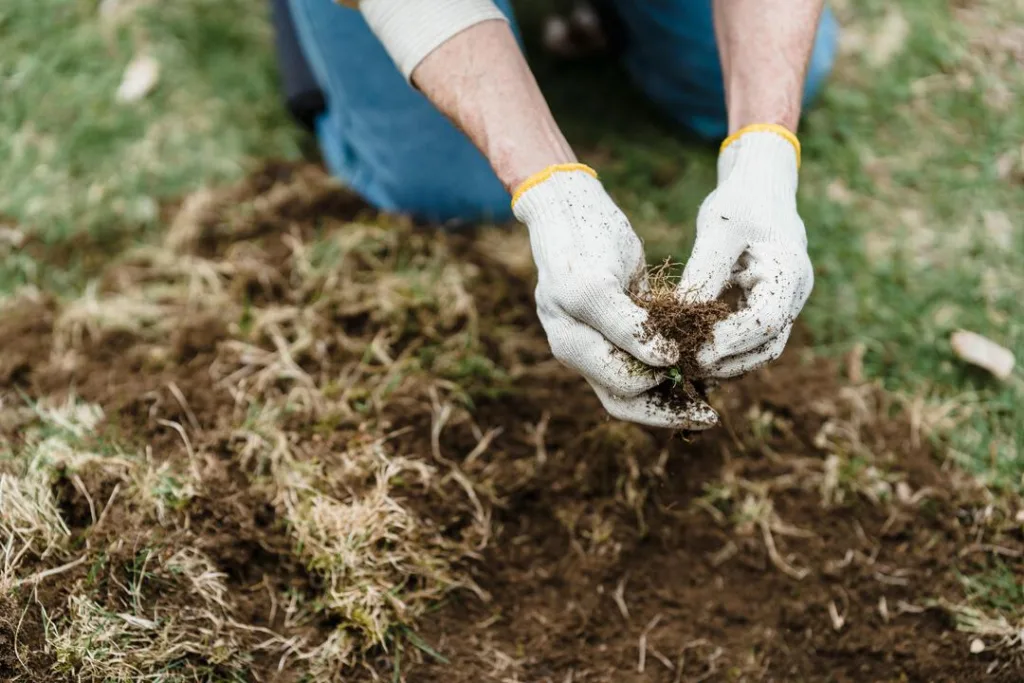
Common Problems and Solutions
St. Augustine grass, while robust and beautiful, comes with its own set of challenges. Addressing these common issues promptly can prevent minor annoyances from becoming major headaches. Here’s a rundown of typical problems faced by St. Augustine lawns and how to tackle them effectively.
Pests
Chinch bugs are notorious for attacking St. Augustine grass. These tiny pests suck the sap out of grass blades, causing the lawn to develop yellowish-brown patches. To manage chinch bugs, regularly inspect your lawn for signs of damage and apply a suitable insecticide as needed. Other pests like grubs and sod webworms can also pose problems, so maintaining a routine pest control schedule is crucial.
Diseases
Brown patch and gray leaf spot are common fungal diseases that can affect St. Augustine grass, especially in humid conditions. These diseases create discolored patches and spots on the grass that can spread if left untreated. To combat these, ensure your lawn is not overwatered and improve air circulation by dethatching and aerating your lawn annually. Fungicidal treatments can also be effective when applied at the first sign of disease.
Environmental Stresses
Drought stress can cause St. Augustine to thin and brown, losing its lush appearance. Although it’s fairly drought-tolerant, during extended dry periods, it’s important to water your lawn deeply but infrequently to encourage deep root growth. Conversely, excessive shade can weaken St. Augustine, despite its shade tolerance. Ensure that trees and shrubs are trimmed to allow sufficient sunlight to reach your grass.
By staying alert to these issues and responding swiftly with the right solutions, you can keep your St. Augustine lawn looking its best. Regular maintenance, coupled with a bit of vigilance, will help your grass thrive and withstand the challenges it may face throughout the year.
FAQs
What is the best way to water St. Augustine grass?
Water deeply but infrequently to encourage a strong root system. Aim for about 1 inch of water per week, either from rainfall or irrigation, applied in a single session or broken into two sessions.
How often should I mow St. Augustine grass?
Mow regularly, keeping the grass at about 2.5 to 4 inches tall. During peak growing seasons, you might find yourself mowing every week to maintain the ideal height without removing more than one-third of the blade at a time.
Can St. Augustine grass grow in shady areas?
Yes, it’s one of the more shade-tolerant warm-season grasses, but it still needs about 4 to 6 hours of direct sunlight daily to thrive. In denser shade, growth may thin out or become patchy.
What kind of fertilizer works best for St. Augustine grass?
Use a balanced, slow-release nitrogen fertilizer. Check soil tests to determine if additional nutrients are needed, focusing on spring and early fall applications to support growth without overwhelming the grass.
How do I deal with brown patches on my St. Augustine lawn?
Brown patches could be a sign of fungal disease or drought stress. Ensure that your watering practices are consistent and consider a fungicide if diseases are suspected. Also, avoid high nitrogen inputs during hot, humid periods.
How do I revive St. Augustine grass after winter dormancy?
Start with a gentle raking to remove any thatch build-up and apply a light fertilizer once all frost threats have passed and the grass begins actively growing. Resume regular watering and mowing routines.
What are common pests that affect St. Augustine grass and how can I control them?
Chinch bugs and grubs are frequent pests. Use insecticides labeled for these pests as needed, following manufacturer directions closely to avoid damaging the grass.
Is St. Augustine grass pet-friendly?
Yes, it can handle moderate traffic, including pets. However, watch for signs of wear or urine damage in specific areas, which may need reseeding or patch repairs.
By addressing these common concerns, homeowners can maintain a lush, healthy St. Augustine lawn that not only beautifies their property but also withstands the challenges of its environment.
Conclusion
In wrapping up this guide to St. Augustine grass, it’s clear that with the right knowledge and a bit of effort, you can cultivate a lawn that not only survives but thrives in warmer climates. From the initial choice of planting sod or plugs, to the regular maintenance required to keep it looking its best, every step is crucial for achieving that lush, vibrant carpet of green.
We’ve covered the characteristics that make St. Augustine grass a top pick for many – its resilience, shade tolerance, and attractive appearance. Proper planting and ongoing care, including optimal mowing practices and a strategic fertilization schedule, play a significant role in the health of your lawn. Additionally, understanding how to handle common problems ensures your grass remains robust against pests, diseases, and environmental stresses.
Remember, St. Augustine grass isn’t just about maintaining something green underfoot; it’s about creating a dynamic part of your home’s ecosystem that enhances aesthetic appeal and usability.
Each section of this guide arms you with actionable information to help nurture your lawn effectively. By applying these practices, you can enjoy the benefits of a healthy, thick lawn that will indeed make your neighbors look on with envy.
Continuously educate yourself, remain patient, and give your lawn the attention it requires — success lies in persistence and attention to detail. Your St. Augustine grass is more than capable of becoming the lush, cool lawn of your dreams. So take this advice, put it into action, and watch as your garden transforms into a beautiful, green oasis.
